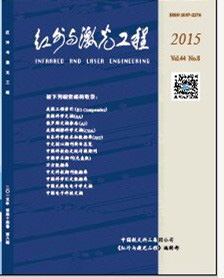|
[1]
|
|
|
[2]
|
Zhang Huizhong, Liu Huixia, Wang Xiao. Experiment research and numerical simulation on laser transmission welding of thermoplastic[D]. Changzhou:Jiangsu University, 2007:59-77.(in Chinese)张惠中, 刘会霞, 王霄. 热塑性塑料激光透射焊接的实验研究与数值模拟[D]. 常州:江苏大学, 2007:59-77. |
|
[3]
|
|
|
[4]
|
Liu Huixia, Xing An, Zhang Huizhong. Temperature field simulation on laser transmission welding of polyvinylchloride[J]. Chinese J Lasers, 2008, 35(11):1801-1807.(in Chinese)刘会霞, 邢安, 张惠中. 聚氯乙烯激光透射焊接温度场的有限元模拟[J]. 中国激光, 2008, 35(11):1801-1807. |
|
[5]
|
|
|
[6]
|
Yang Kun, Wang Xiao, Zhang Huizhong, et al. Influence of additive on welding quality of laser transmission welding plastics[J]. Laser Technology, 2009, 33(3):246-249.(in Chinese)杨昆, 王霄, 张惠中, 等. 吸收剂对热塑性塑料激光透射焊接质量的影响[J]. 激光技术, 2009, 33(3):246-249. |
|
[7]
|
Zaka G, Mayboudi L, Chena M, et al. Weld line transverse energy density distribution measurement in laser transmission welding of thermoplastics[J]. Journal of Materials Processing Technology, 2010, 210(1):24-31. |
|
[8]
|
|
|
[9]
|
Devrient M, Da X, Frick T, et al. Experimental and simulative investigation of laser transmission welding under consideration of scattering[J]. Physics Procedia, 2012, 39:117-127 |
|
[10]
|
|
|
[11]
|
|
|
[12]
|
Bappa Acherjee, Arunanshu S Kuar, Souren Mitra, et al. Experimental investigation on laser transmission welding of PMMA to ABS via response surface modeling[J]. Optics Laser Technology, 2012, 44(5):1372-1383. |
|
[13]
|
|
|
[14]
|
Bappa Acherjee, Arunanshu S Kuar, Souren Mitra, et al. Modeling of laser transmission contour welding process using FEA and DoE[J]. Optics Laser Technology, 2012, 44(5):1281-1289. |
|
[15]
|
|
|
[16]
|
Lei Jianbo, Wang Zhen, Wang Yunshan, et al. Experiment study of laser transmission welding of polymethylmethacrylate[J]. Chinese Journal of Lasers, 2013, 40(1):0103006-1-0103006-5.(in Chinese)雷剑波, 王镇, 王云山, 等. 激光透射焊接聚甲基丙烯酸甲酯试验研究[J].中国激光, 2013, 40(1):0103006-1-0103006-5. |
|
[17]
|
Wei Hong, Wang Chuanyang. Technics and performance research of laser transmission welding polycarbonate plastics[J]. Chinese Journal of Lasers, 2011, 38(11):100-103.(in Chinese)韦宏, 王传洋. 聚碳酸酯激光透射焊接工艺及性能研究[J]. 中国激光, 2011, 38(11):100-103. |
|
[18]
|
|
|
[19]
|
Zhang Wei, Zhang Qingmao, Guo Liang, et al. Research on the properties of through-transmission laser welding of polycarbonate[J]. Chinese Journal of Lasers, 2012, 39(7):0703001.(in Chinese)张卫, 张庆茂, 郭亮, 等. 激光透射焊接聚碳酸酯接头性能研究[J]. 中国激光, 2012, 39(7):0703001. |









 DownLoad:
DownLoad: